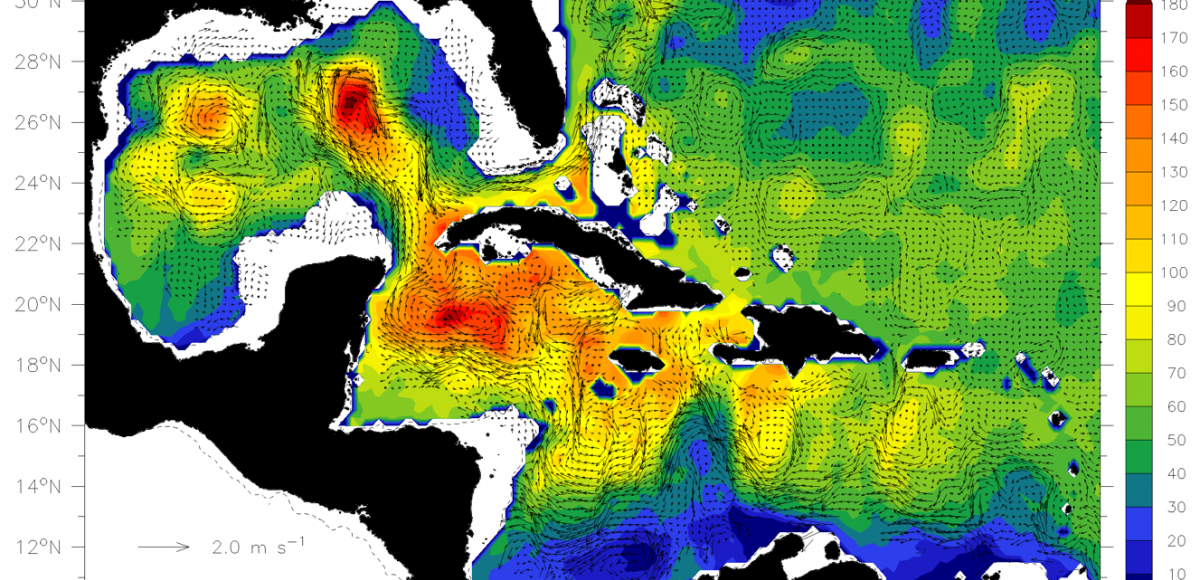The sea surface is a critical link that couples oceanic and atmospheric processes for both weather and climate events. The University of Miami’s Upper Ocean Dynamics Laboratory has been developing a suite of daily ocean heat content (OHC) products based on satellite-derived Sea Surface Temperature (SST) and Sea Surface Height Anomaly (SSHA) measurements since 1998. These data, used by forecasters and modelers, help reduce forecast intensity errors by as much as 22 percent.
Studies have shown that understanding sources and sinks of OHC (relative to thef 26 C isotherm) in front of hurricanes is important to intensity forecasting. This daily product suite resolves the Loop Current (LC) complex that includes both warm and cold core eddies and is central to understanding physical processes and the linkage to the Intra-Americas Seas (IAS) and fisheries oceanography.
- Click here for the most recent Gulf of Mexico image














